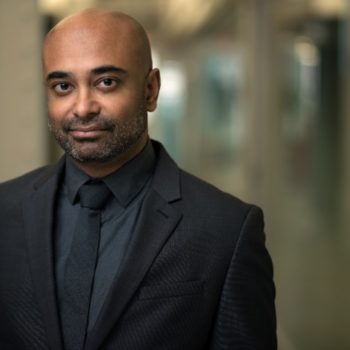Culture eats strategy for breakfast. Or so we’ve been told. But what happens when you try building culture through strategy? This is what we attempted to do in the Open Society Foundations’ Economic Justice Program. The program, which sought to articulate the first concentrated effort of OSF to combat systemic economic injustice globally, officially wrapped up in January 2022, and before it did we created our very own yearbook to commemorate the program’s short life. When answering the question ‘What was your proudest moment while working at EJP?’, many team members commented on the strategy:
“Despite numerous moments when many of us (definitely me) wondered if it might not actually be possible — we truly became a team, with a strategy and a culture we all believed in.”
Where we were: In 2019, when we set out to develop the Economic Justice Program’s strategy, the program had only just been created. Formed through a merger of two former OSF programs, it brought together around 40 people from across multiple teams — including both grantmakers and impact investors — all with vastly different experiences and outlooks. It was the start of a major effort, a new focus for the Foundations on the issue of economic justice; but these newly assembled team members also had experience, from their previous programs and other work with OSF leadership and across the Foundations. And experience often comes with its own baggage. Plus, as a result of the myriad institutional changes that had taken place, people were skeptical that they would have a say in defining and designing the new program’s strategic and programmatic direction. In essence, we were less a ‘team’ and more a group of individuals, grappling with uncertainty.
What we did: The process of developing the strategy wasn’t perfect; at times it was even messy. Along our design journey, we had to adapt to changing contexts including COVID-19 and the racial justice movement, requests from OSF leadership, and field partner priorities. It’s true that, at times, the decision-making rationale of the program’s senior leadership team (which included Megan) wasn’t always clear and left staff dissatisfied with the strategy process or its outcomes. For instance, in order to make way for new priorities and focus, the leadership team made decisions to close bodies of work long championed by individual program staff whose own expertise and careers were often deeply embedded in those fields.
Overall, however, team members praised the rigor, thoughtfulness, and participation that characterized our journey towards developing a new strategy. Despite shifting constraints, competing priorities, and roadblocks encountered along the way, and even with people split across three different office locations, we ended up with a greater sense of collective purpose and our individual places in it. More important was just how proud everyone felt about the grantmaking and impact investment work that we had designed together.
In late 2021, due to changes in OSF leadership and priorities, the decision was made to centralize the Foundations’ cross-cutting global work and resulted in the closure of all of OSF’s freestanding global thematic programs, including Economic Justice Program. Because of this, the strategy was never implemented in its full form, but many of its ideas are helping to shape the work of OSF’s new global program which continues OSF’s work on economic justice. Despite this, the strategy we articulated and the process of developing it was successful by many other measures.
The Economic Justice Program team walked away knowing what it felt like to have a clear and precise strategy that we all believed in, one that not only served as a foundation for what we planned to do, but also stitched together the team that would do it. The process grounded staff in the core practices of good strategy design using rich evidence and data and building in adaptability, fallibility, and learning from the beginning. We will never know precisely how that kind of esprit de corps, fostered through a strategy process, would translate into more effective, innovative, and coherent work — but the early outlook was promising.
Looking back, we see five lessons for engaging teams to design evidence-based strategies that we can take away from our experience.
- Leadership should communicate often and clearly, and facilitate staff participation and ownership of strategy design processes. We invested in external communications support throughout the strategy design journey, which helped us to prioritize regular communications and adjust our strategy materials and messages according to the interests of key stakeholders. The design of the strategy development process itself was collaborative and participatory. We made the strategy timeline and RACI matrix available to everyone in the team, and as staff reacted to various program leadership asks or offered ideas on how to improve things, we adjusted our practices and process. For example, we later introduced staff town halls, where colleagues could ask questions or raise issues relating to the strategy design or the wider organizational context.
- Give staff ownership and autonomy wherever possible. Set clear lines around decisions and decision-makers, but decentralize as much as possible to your frontline managers and implementers — they know the field and issues best. The Economic Justice Program’s senior leadership believed in staff and trusted them to make informed recommendations, decisions, and adaptations, especially in their content areas, which is why we delegated portfolio design to program officers and analysts using key tools, requirements, support, and templates provided by the central strategy team.
- Don’t neglect vision, mission, and values. So many skip this step or forget to reconnect individual strategies to the bigger purpose of your efforts, assuming that these connections are clear or simply not that important. But if your strategy doesn’t relate back to your mission, something is wrong — either your mission or your strategy. Every strategy needs vision, mission, and values to orient its work, encourage ambition, and set limitations.
 Don’t be afraid to make tweaks to your vision, mission, and values as clarity grows and context shifts. In this context, a vision should describe what the world looks like with the changes you seek to make in it; a mission is your core statement of what you as an entity are best suited to do and serve; and values are a set of underpinning standards about how you operate individually and as a collective. We found it especially helpful (though tough at times) to shape goals, develop norms, and spell out our values together, providing space for a team to put sometimes nebulous ideas into their own words helped to foster understanding and ownership.
Don’t be afraid to make tweaks to your vision, mission, and values as clarity grows and context shifts. In this context, a vision should describe what the world looks like with the changes you seek to make in it; a mission is your core statement of what you as an entity are best suited to do and serve; and values are a set of underpinning standards about how you operate individually and as a collective. We found it especially helpful (though tough at times) to shape goals, develop norms, and spell out our values together, providing space for a team to put sometimes nebulous ideas into their own words helped to foster understanding and ownership. - Don’t forget about your ‘connective tissues’ — and your muscles. Who or what systems, teams, and processes enable your work? Who or what makes it more than the sum of its individual parts? In our case, program leaders recognized that there were strategic and operational functions that could amplify the work and impact of the programs efforts, which we called our ‘enablers.’ Two of the program’s most crucial enabler functions were advocacy and monitoring, evaluation, research, and learning with a combined total of seven staff members with deep expertise in these units. As these teams were in the early stages of defining their purpose and objectives already for the new program, we used the strategy process to support the design of the units’ objectives and to establish the needs and expectations from the rest of the team. This helped us to make these units more service-oriented and impact-focused and ensure a greater chance of embedded effective advocacy and MERL practices throughout the implementation of the strategy.
- Embrace fallibility. Early on, we had to get comfortable with the truth that we didn’t — and couldn’t — know everything.
 But we could continue to gather evidence and make changes to close some of these knowledge gaps over the course of the strategy’s implementation. Use your understanding of your knowledge (vis-à-vis others in the field or sector) to determine how to design your strategy and how to adopt a learning mindset. We built in iteration while designing strategy and planned adaptation moments as part of implementation paths, encouraging teams to recognize where they could be wrong and to be primed to revise expectations and strategy when things didn’t work out as expected. Key to this orientation was the fact that portfolio working groups could proceed with different levels of confidence in their assumptions and theories of change because the goals varied in ambition and novelty. Groups were encouraged to plan for refining strategy and implementation over time, because they would be learning by doing.
But we could continue to gather evidence and make changes to close some of these knowledge gaps over the course of the strategy’s implementation. Use your understanding of your knowledge (vis-à-vis others in the field or sector) to determine how to design your strategy and how to adopt a learning mindset. We built in iteration while designing strategy and planned adaptation moments as part of implementation paths, encouraging teams to recognize where they could be wrong and to be primed to revise expectations and strategy when things didn’t work out as expected. Key to this orientation was the fact that portfolio working groups could proceed with different levels of confidence in their assumptions and theories of change because the goals varied in ambition and novelty. Groups were encouraged to plan for refining strategy and implementation over time, because they would be learning by doing.
For more on EJP’s strategy development journey and lessons learned, please check out our learning brief, “Making sense of a strategy that never was: Lessons from an OSF program.”
Megan Colnar is a recognized expert and thought leader in strategy, impact measurement and management, learning, and organizational resilience for complex, dynamic social change efforts, and is the owner and principal of Revolution Impact. Find her on LinkedIn.
Robin Varghese is the division director for climate justice in the Global Programs at Open Society Foundations. Find him on LinkedIn.




